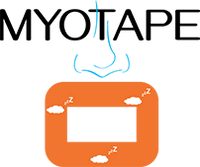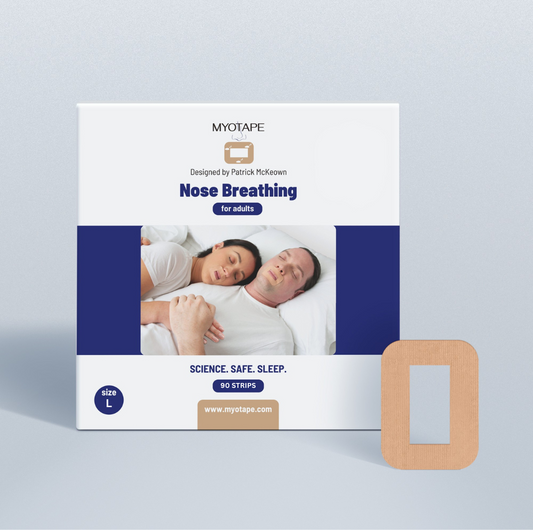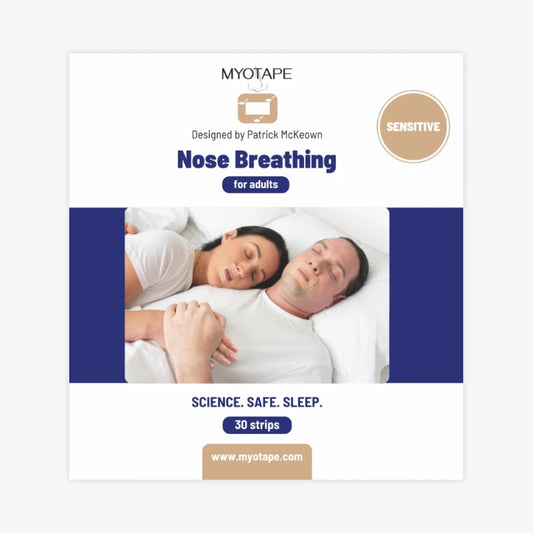Sleep is important for the healthy development of children and nasal breathing helps them have a longer and more restful sleep. Children's sleep needs change as they grow. Toddlers (1-2 years) need 11-14 hours of sleep daily, including naps. Preschoolers (3-5 years) should get 10-13 hours, while school-age children (6-13 years) need 9-12 hours. Teens (14-17 years) require 8-10 hours of sleep each night.
Dr. Christian Guilleminault, a pioneering physician and researcher in sleep medicine, made significant contributions to our understanding of sleep disorders. He coined the term "obstructive sleep apnea syndrome" and developed the apnea-hypopnea index (AHI), tools that are crucial in diagnosing and treating sleep disorders. Dr. Guilleminault (2014) had a special interest in ensuring children breathe through their noses, both during the day and at night.
Why Nasal Breathing Matters for Children
Dr. Guilleminault emphasized that treating pediatric obstructive sleep apnea (OSA) and sleep-disordered breathing (SDB) involves more than just addressing the symptoms. According to him, the key to effective treatment is restoring continuous nasal breathing. This means that children should be able to breathe through their noses all the time, not just when they are awake but also when they are asleep.
Key Insights from Dr. Guilleminault’s research
- Restoring Nasal Breathing is Crucial in Kids: Dr. Guilleminault’s studies indicate that restoring nasal breathing during both wakefulness and sleep may be the only complete solution for pediatric sleep-disordered breathing. This is because nasal breathing supports the proper development and function of the airways.
- Long-term Effects of Mouth Breathing in Children: Even if surgical interventions like removing adenoids or tonsils provide short-term relief, they do not address the underlying issue if the child continues to breathe through their mouth. Continued mouth breathing can lead to abnormal growth and development of the airways, which can cause long-term health problems.
What Does This Mean?
Nasal breathing plays a vital role in maintaining healthy airways. The nose filters, humidifies, and warms the air before it reaches the lungs. This process helps prevent infections, reduces inflammation, and ensures that the air entering the lungs is at the right temperature and moisture level.
Thus, continuous nasal breathing supports the proper development of the airways. When children breathe through their noses, it can help with treating pediatric obstructive-sleep-apnea (OSA) and sleep-disordered-breathing (SBD), as well as improving overall respiratory health. However, mouth breathing can adversely affect, and even worsen OSA and SDB in children.
While conditions like enlarged adenoids and tonsils might contribute to mouth breathing, from the study something was clear. Surgical procedures like removing adenoids or tonsils can provide immediate relief from symptoms of OSA and SDB by clearing obstructions in the airway. However, if a child continues to breathe through their mouth post-surgery, the root problem remains unaddressed (Lee et al., 2015). This means that while the symptoms might diminish temporarily, the underlying issue persists.
Dr. Guilleminault stated this: “In fact, restoration of nasal breathing during wake and sleep may be the only valid complete correction of pediatric sleep disordered breathing.” Thus, by promoting nasal breathing, you can help your child achieve better sleep quality and eventually eliminate OSA and SDB in children.
As a parent, you can play a crucial role in helping your child develop healthy breathing habits. One effective way to encourage nasal breathing is through simple breathing exercises. Patrick McKeown, a renowned breathing coach, offers an online breathing course for children where he demonstrates these exercises with his daughter, Lauren, who is 8 years old. These exercises are designed to be easy and fun for children, making it easier for them to adapt to nasal breathing.
Additionally, you can find out more information on our unique MyoTape for children. This is a scientifically backed, gentle and safe mouth tape for kids designed to help your child breathe through their nose effortlessly.
References:
Guilleminault et al. Towards Restoration of Continuous Nasal Breathing as the Ultimate Treatment. Goal in Pediatric Obstructive Sleep Apnea. Enliven: Pediatrics and Neonatal Biology. 2014. https://pubmed.ncbi.nlm.nih.gov/28859912/
Lee SY, Guilleminault C, Chiu HY, Sullivan SS. Mouth breathing, “nasal disuse,” and pediatric sleep-disordered breathing. Sleep Breath. 2015 Dec;19(4):1257-64. https://pubmed.ncbi.nlm.nih.gov/25877805/








